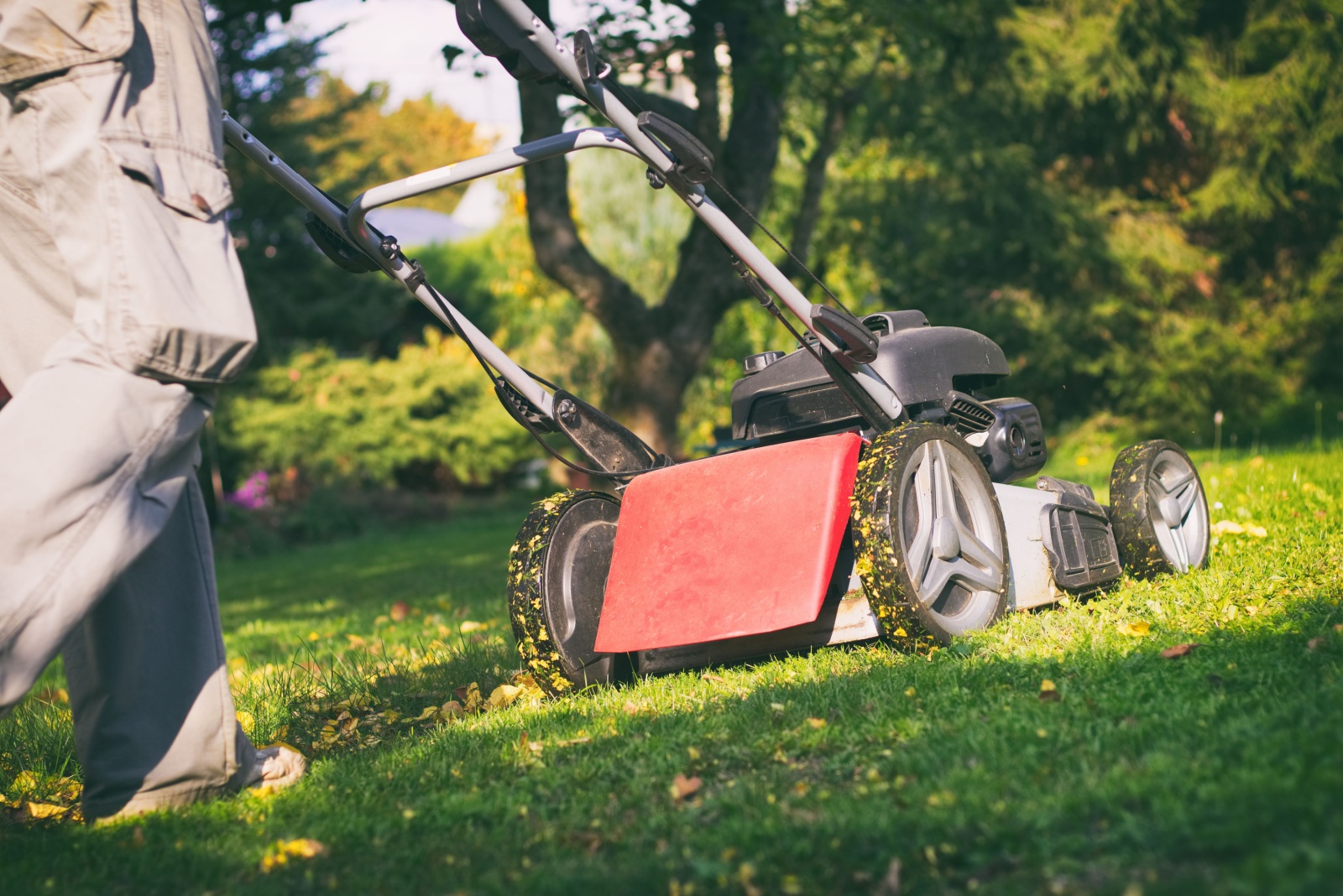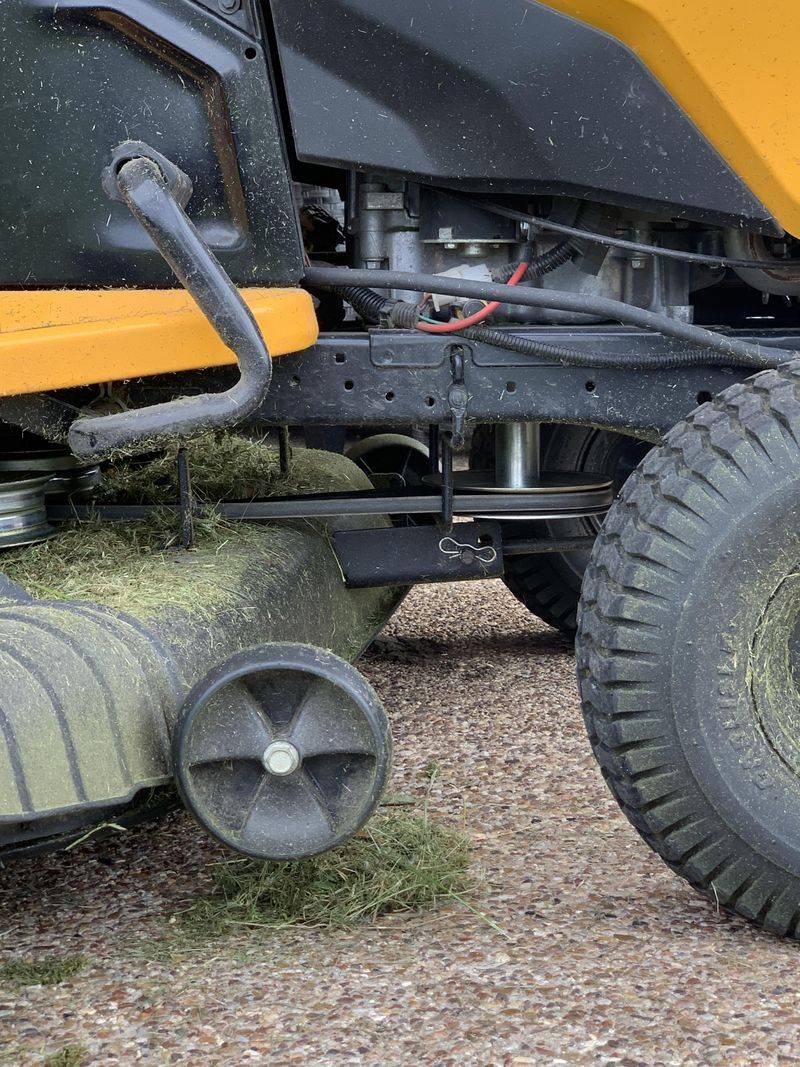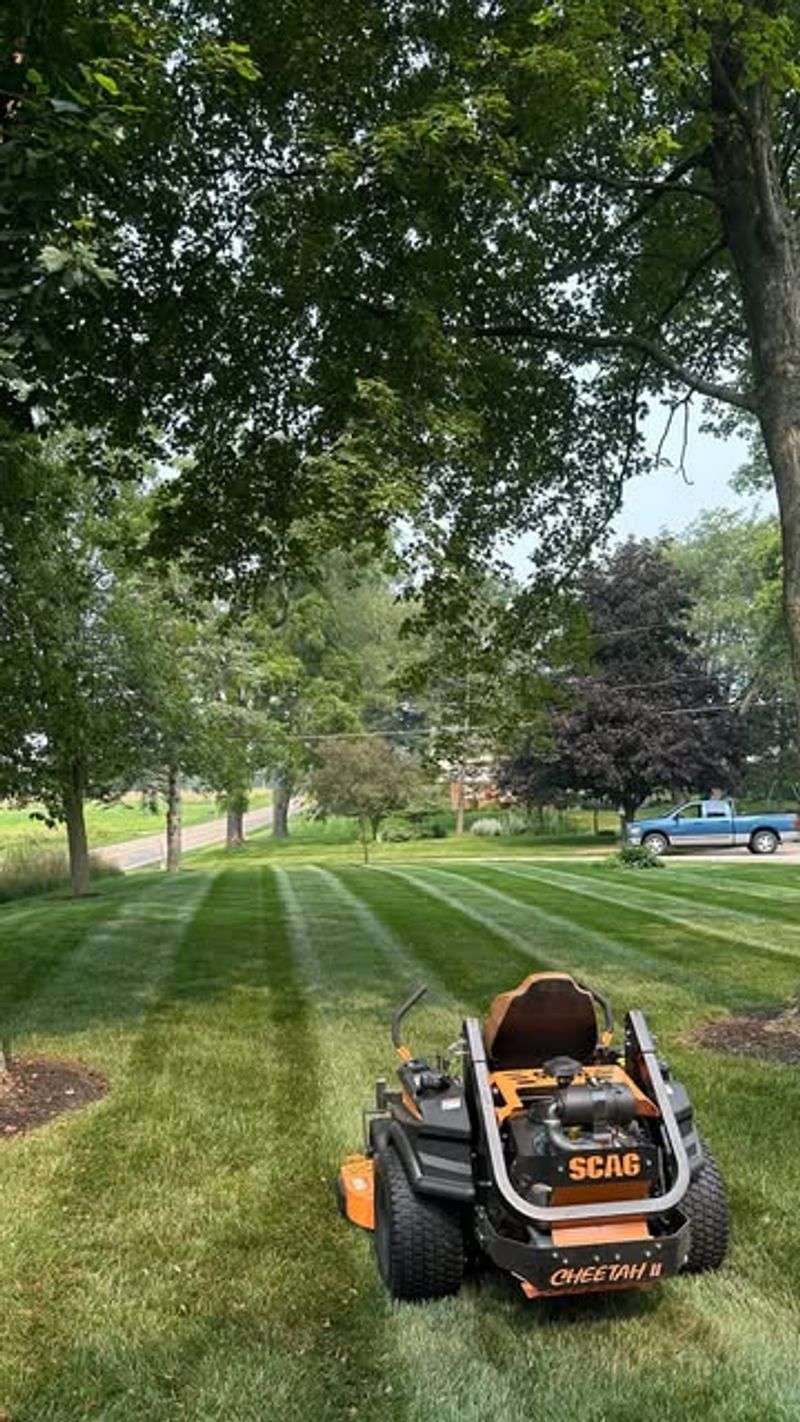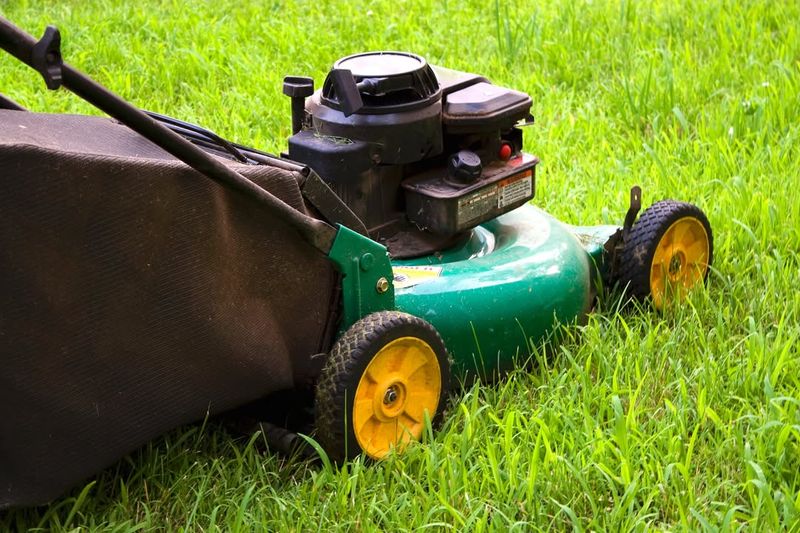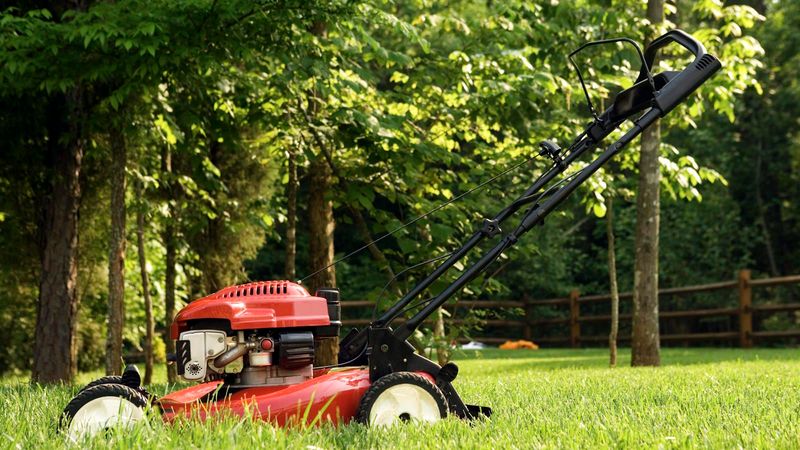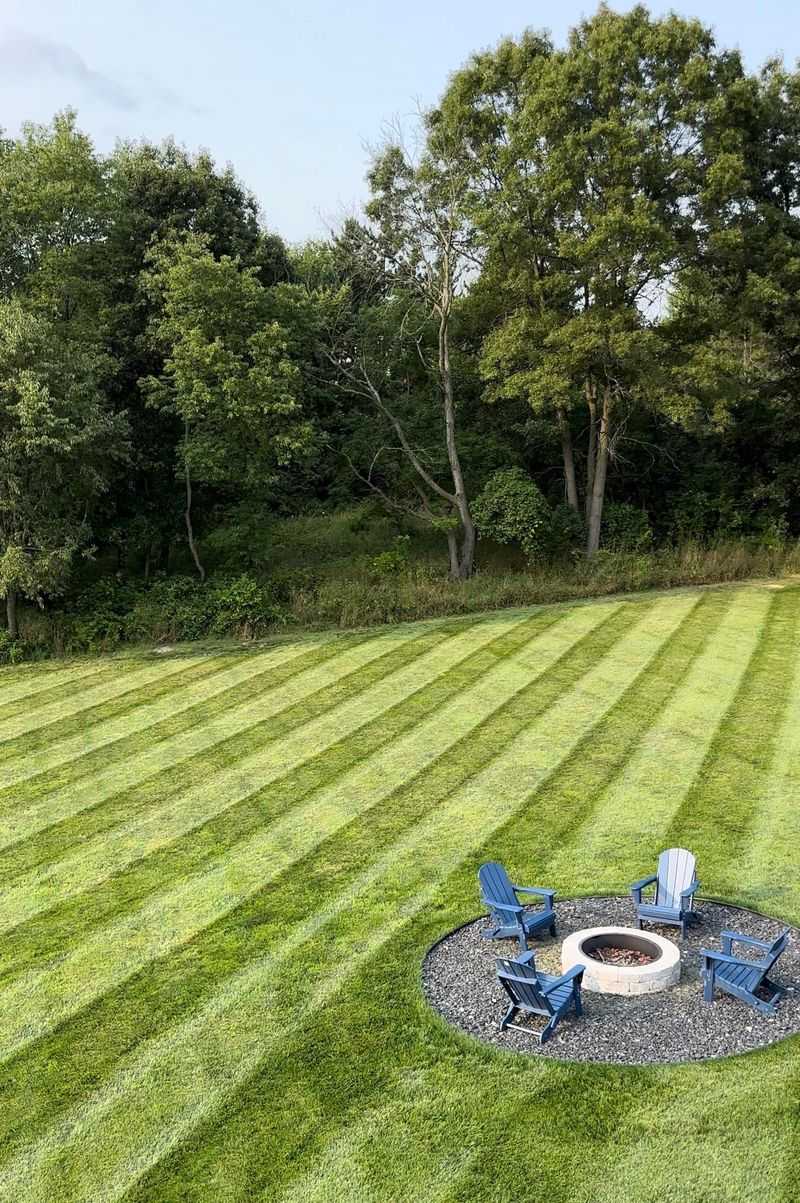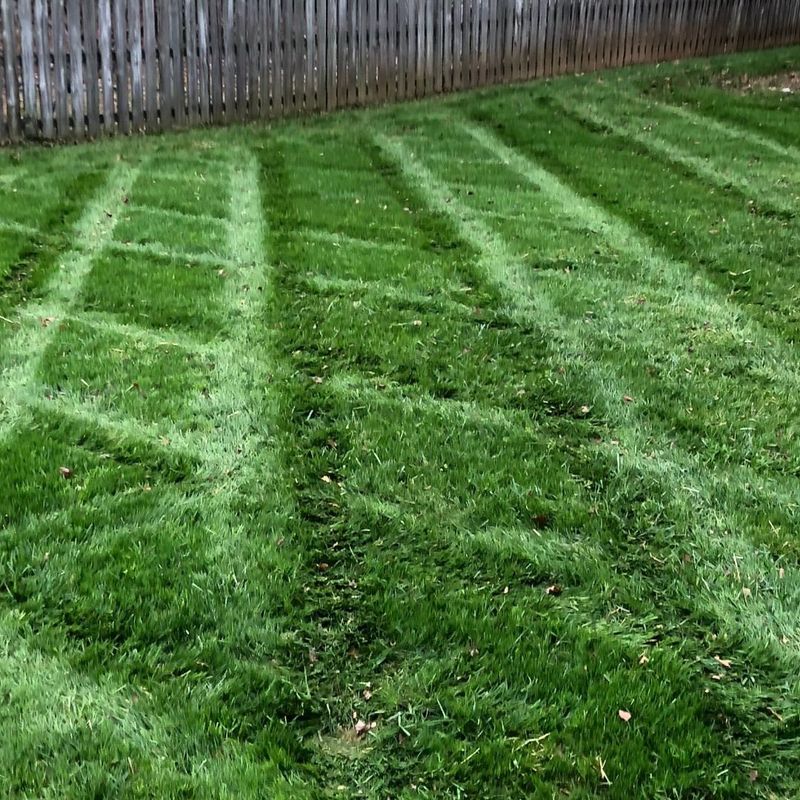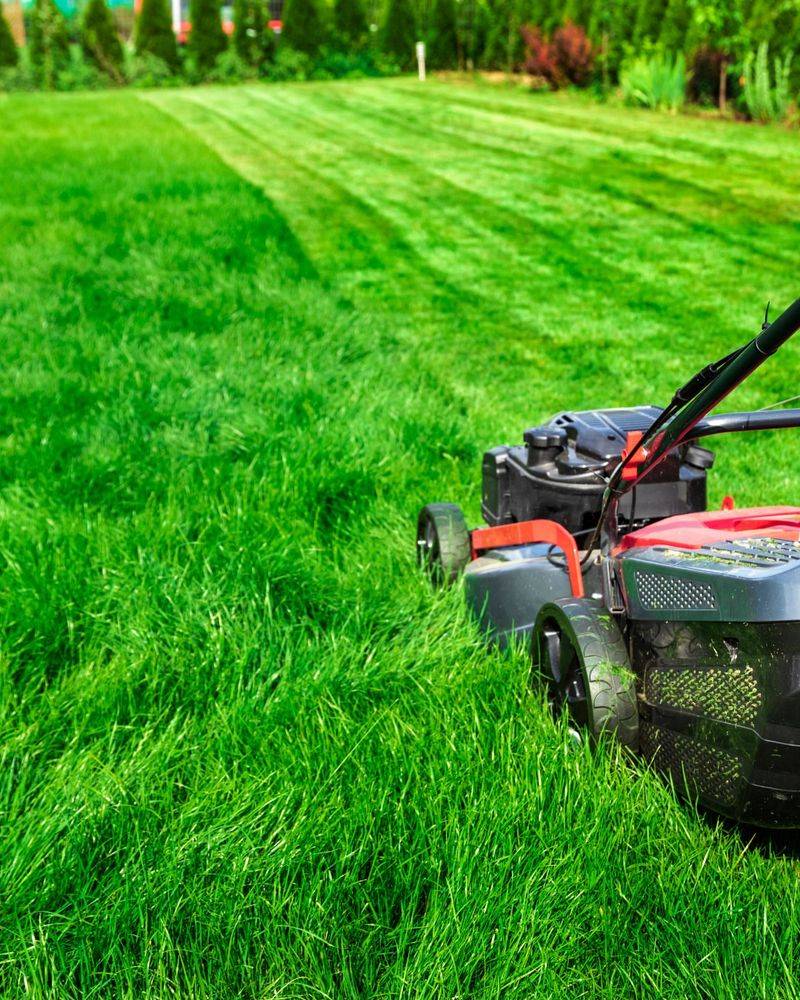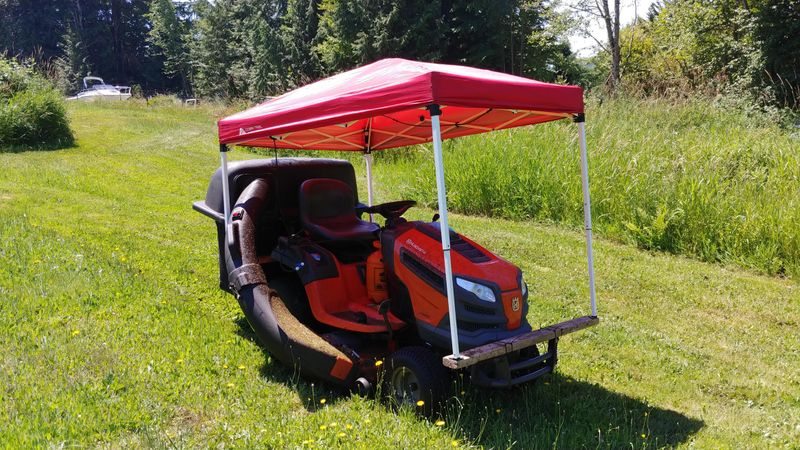October brings cooler weather to Texas, making it a perfect time to give your lawn some special attention before winter arrives. Your grass needs different care during this transition month to stay healthy and strong.
Following the right mowing practices now will help your yard look beautiful through the fall and bounce back even better next spring.
1. Raise Your Mower Blade Height
Taller grass handles the October transition better than short-cut turf. Set your mower deck to leave grass about three to four inches tall, which helps roots grow deeper and stronger.
Longer blades also shade the soil, keeping moisture locked in during those warm Texas afternoons. Your lawn will develop better drought resistance and crowd out pesky weeds naturally.
Most Texas grass types thrive with this extra height as temperatures begin dropping.
2. Mow When Grass Is Completely Dry
Wet grass clumps together and clogs your mower, creating an uneven cut that looks messy. Morning dew or recent rain makes grass blades bend instead of standing upright for a clean trim.
Wait until midday when the sun has dried everything off completely. Dry conditions also prevent disease spread, since wet clippings can harbor fungal spores that damage your lawn.
Your mower will run smoother and last longer too.
3. Follow The One-Third Cutting Rule
Never chop off more than one-third of the grass blade length in a single mowing session. Cutting too much at once shocks the grass and weakens its ability to produce food through photosynthesis.
Stressed grass turns brown quickly and becomes vulnerable to pests and diseases. If your lawn got too tall, mow it twice over several days instead of scalping it all at once.
Patience pays off with healthier, greener results.
4. Keep Your Mower Blades Sharp
Dull blades tear grass instead of cutting it cleanly, leaving ragged brown edges that make your whole yard look sick. Those torn tips also lose more water and invite disease problems.
Sharpen your blades every four to six weeks during mowing season for best results. You can do it yourself with a file or take them to a hardware store for professional sharpening.
Sharp blades mean healthier grass and less work for your mower engine.
5. Change Your Mowing Pattern Regularly
Mowing the same direction every time trains grass to lean one way, creating ruts and compacted soil beneath your wheels. Your lawn develops an uneven, worn appearance that looks sloppy.
Switch up your pattern each time you mow—go vertical one week, horizontal the next, then try diagonal stripes. This encourages grass to grow straight up instead of leaning.
Your yard will look professionally maintained with better overall thickness.
6. Leave Grass Clippings On The Lawn
Grass clippings are free fertilizer that returns valuable nutrients back to your soil as they break down. They contain nitrogen, phosphorus, and potassium that feed your lawn naturally without chemicals.
Clippings decompose quickly and do not cause thatch buildup when you mow regularly. Bagging them just creates extra work and waste you have to haul away.
Let nature recycle and save yourself time and money on fertilizer products.
7. Reduce Mowing Frequency As Growth Slows
Cooler October temperatures tell Texas grass to slow down its growth naturally. You might have mowed weekly during summer, but now your lawn probably needs cutting only every ten to fourteen days.
Watch your grass height instead of sticking to a rigid schedule. Mowing too often wastes your time and stresses grass that is preparing for winter dormancy.
Let your lawn guide you on when it actually needs attention.
8. Avoid Mowing During Extreme Heat Spells
October in Texas still brings surprise hot days with temperatures climbing into the upper 80s or 90s. Mowing during these heat spikes stresses already-struggling grass even more.
Wait for cooler morning hours or skip mowing until temperatures drop back down. Heat-stressed grass loses moisture faster after cutting and may turn brown in the hottest spots.
Give your lawn a break when Mother Nature cranks up the thermostat unexpectedly.

